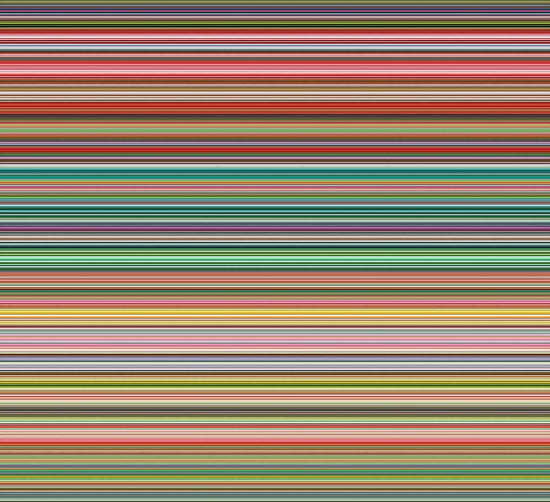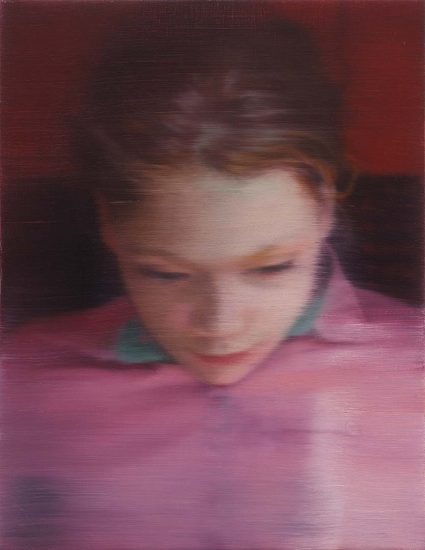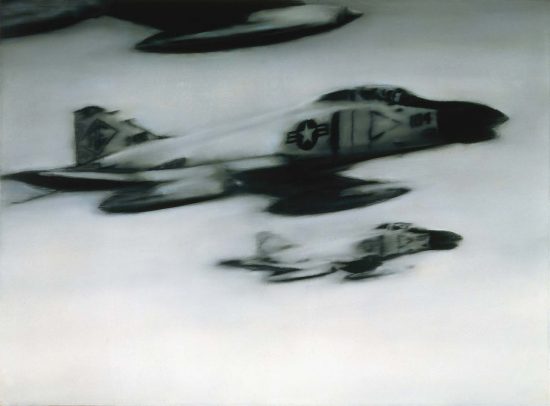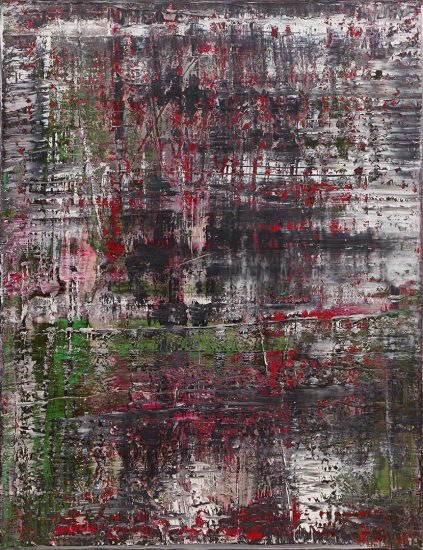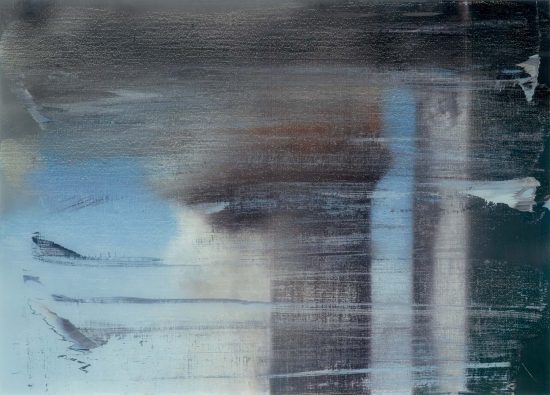Sharne Wolff gazes into the haze of Gerhard Richter’s career survey…
As the producer of the most expensive work available by a living artist in Europe, Gerhard Richter is also among the most searched artists online. Google Image his name you’re met with a broad choice of categories – Landscapes, Photography, Portraits, Abstracts, Betty and so on. It’s therefore no surprise that the press release for the recently opened Life of Images at Queensland’s Gallery of Modern Art (QAGOMA) – the first major show of Richter’s work in Australia – claims that in this display, “we encounter Richter’s endless variation of technique and inventiveness as a painter”. That, we do.
Curated by Griffith University’s Rosemary Hawker and QAGOMA Senior Curator Geraldine Kirrihi Barlow, The Life of Images was more than 5 years in the making. Encouraged by Dietmar Elger, Director of the Richter Archive in Dresden, local and international loans were secured from 28 different sources, including Richter’s own collection. Like casting a film with multiple actors, the QAGOMA team battled to secure favoured works while aiming to maintain the chemistry of the show. The consequence of these international manoeuvres is a marvel of a display. Elegantly designed and thoughtfully curated, it’s one that demonstrates Richter’s wide oeuvre and “consistent inconsistency” yet simultaneously feels intimate and personal. A mostly minimal arrangement of works in a succession of distinct yet thematically-streamed rooms gives the paintings space, and allows for distant views – an important detail when looking at Richter’s work.
Richter’s technical skills, artistic innovation and the divergent nature of his practice are all in evidence in the show’s opening works. The eye-catching, multi-coloured Strip (927-9), is a digital print set between dibond and perspex. Created in 2012 and marrying serendipity with op art, Strip owes its existence to a computer-generated reinterpretation of a small detail extracted from 1990s Abstract Painting (724–4). Although fans of Richter’s geometric abstract works may be disappointed that this exhibition doesn’t deliver further examples of the style, Strip is evidence that while Richter might be an octogenarian, he continues to find new ways of painting and working with contemporary technologies.
Displayed at the Gallery entrance adjacent to Strip is the exhibition’s hero image, Ella. Selected for QAGOMA’s advertising material and displayed in large-scale advertisements, Ella is diminutive and beautifully quiet in the real. Acting as a taster to Richter’s distinctive blurring technique, this small painting of the artist’s daughter made in 2007 reappears as a photographic image in the artist’s momentous Atlas project. In something of a coup for QAGOMA and The Life of Images, 400 panels of collected images – perhaps around one third of the exhibition’s total space – are displayed in a long corridor. Representative of the artist’s lifelong photographic collection (housed as 800 panels in Städtische Galerie im Lenbachhaus, Munich), Atlas Overview is a work in its own right, and shown here for the first time.
Along with Atlas Overview, the exhibition is organised around six themes. In the first room – ‘Found’ – a selection of photo-paintings in multiple shades of grey begin with 1962’s Folding Dryer, the earliest dated painting in the show. Born in Dresden between World Wars in 1932, Richter and his then wife fled to West Berlin in 1961 – just weeks before the building of the Berlin Wall. It was during this period that Richter began experimenting with the technique of obscuring the clarity of his images by blurring the wet paint. The method results in varying levels of indistinctness that, according to Hawker’s catalogue essay, proposes to aid in recognising how “images are repeated and reproduced, while maintaining themselves across iterations”. It’s remarkable that Richter’s study of the ascendancy of images began well before the new millennium when, due to the internet, the circulation of images is now almost infinite with possibility. Influenced by American pop artists, Richter painted photographs sourced in magazines and advertising material, enamoured with the idea that he would be free from concerns about composition, or even deciding what to paint. Painted in 1964, Phantom Interceptors depicts a squadron of American jets engaged in protecting West Germany during the Cold War. Alluding to the Cold War tensions at the time, Richter’s hyperreal reproduction points to the way images might be analysed in different contexts.
In the mid-sixties, Richter also began to reproduce his family photographs in painting. The ‘Histories’ room includes an edition print of Betty, one of Richter’s most well-known portraits. The allure of this popular image persists even with a printed lithograph framed behind glass. It’s accompanied by his enigmatic 1965 photo-paintings, Aunt Marianne and Uncle Rudi – which simultaneously consider Richter’s personal life and German national history. While in real life Richter’s Aunt Marianne died because of her mismanaged treatment at the hands of Nazi doctors, the artist’s Uncle Rudi joined the German army. Here he adopts a proud but somewhat unsettling pose in his new Nazi uniform. In an era when painting had already been declared dead, Richter revived the medium to reproduce these photographs as history paintings, simultaneously portraying the layers of reality in an image and the limit of a photograph’s fixed or ‘true’ meaning. As one of the first German artists to tackle Germany’s recent past, Richter’s early experience on both sides of the Berlin Wall produced his unique perspective, while the blurring method enabled him to represent the unmentionable subject of Nazi history via a veil of detachment.
Fittingly bookended by two of Richter’s ‘Grey’ monochrome paintings, German war history is also revisited in Richter’s attempt to paint the Holocaust – 2014’s Birkenau series. Here the Sonderkommando photographs – the only four photographs known to have been taken (and smuggled out in a toothpaste tube) from the Auschwitz-Birkenau concentration camp – are each reproduced and then reconstructed as a large-scale abstract painting in shattered streaks of grey and white, fractured here and there by fits of green and red. As the Birkenau paintings channel, but conceal, the lasting effects of Germany’s role in War atrocities, their resonance in an Australian setting is correspondingly provocative as we seek to come to terms with our own colonial history.
The close relationship between Richter’s abstract paintings and images is also witnessed in a room of anonymous landscape paintings themed ‘Nature’. In art historical tradition, artists painted the landscape with the aim of making a perfect visual record of nature. By juxtaposing Richter’s blurred landscapes with abstract paintings that may only accidentally represent natural phenomena, the exhibition highlights the artist’s opposition to that tradition, and focuses on the dialogue between the two styles. Richter’s intention is to convey the experience of nature across both hyperreal and abstract forms is therefore borne out with the display. It mostly works.
Produced with custom-built squeegees and plenty of physical strength, many of Richter’s abstracts begin with a blank canvas. Others like his dramatic image of the moment of the 11 September attacks on New York’s World Trade Centre, September (Ed. 139) 2009, are realistic paintings ‘undone’ by scraping the surface. The Life of Images also contains further examples of Richter’s abstract style across different forms – overpainted photos, painting under glass, and paintings reproduced as tapestries. Although his hyperreal paintings have generally been applauded, many have been critical of, or bewildered by, the abstract works. British artist David Hockney has been quoted as saying, “I just can’t see any profundity. He always makes the same stuff with the squeegee, which is okay, but I don’t see what’s so great about it.” Conversely, Richter has been applauded for his fascinating versatility and his ability to come to grips with, revisit, and expand on, the legacies of painting.
Whatever your view of Richter’s wild oscillation between styles, The Life of Images is a seductive display that calls you back for a second and third time. When combined with the newly-opened and innovative Reimagined Australian Collection, and upcoming shows – Yayoi Kusama’s, Life is the Heart of a Rainbow and Noel McKenna’s Landscape-Mapped – has there ever been a better time to visit Brisbane?
The Life of Images. Until February 4, 2018. Queensland Art Gallery | Gallery of Modern Art, Brisbane
